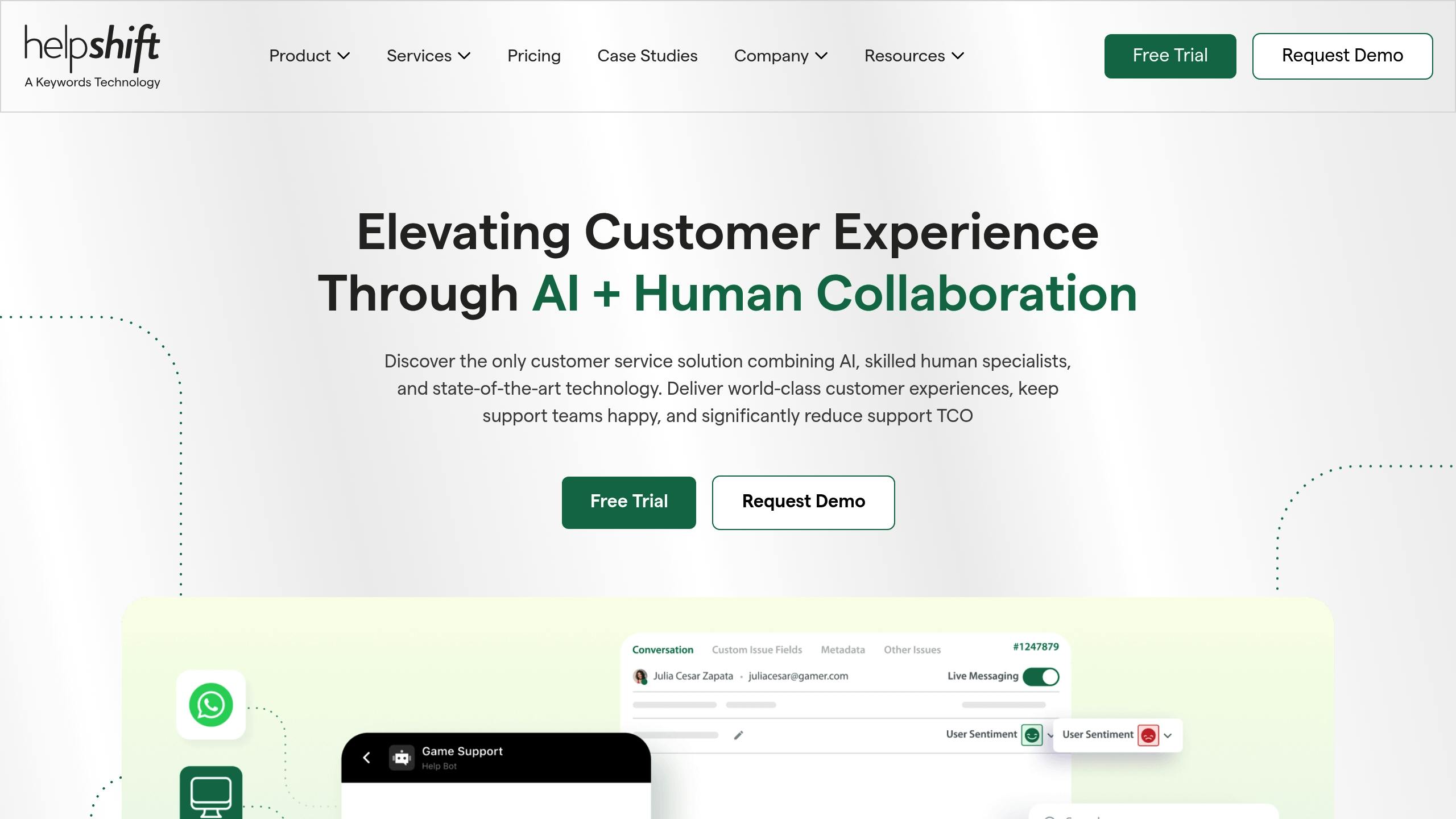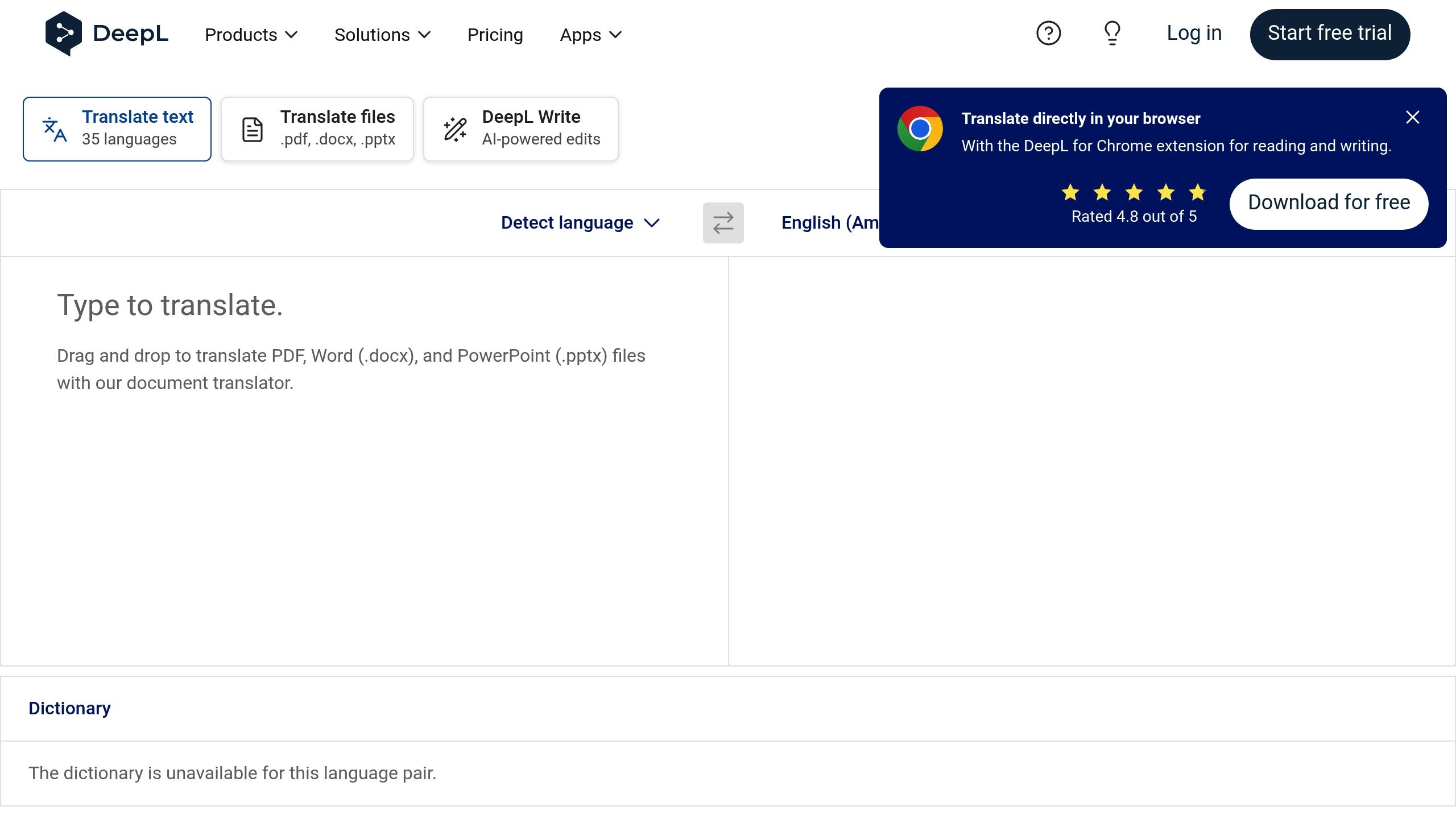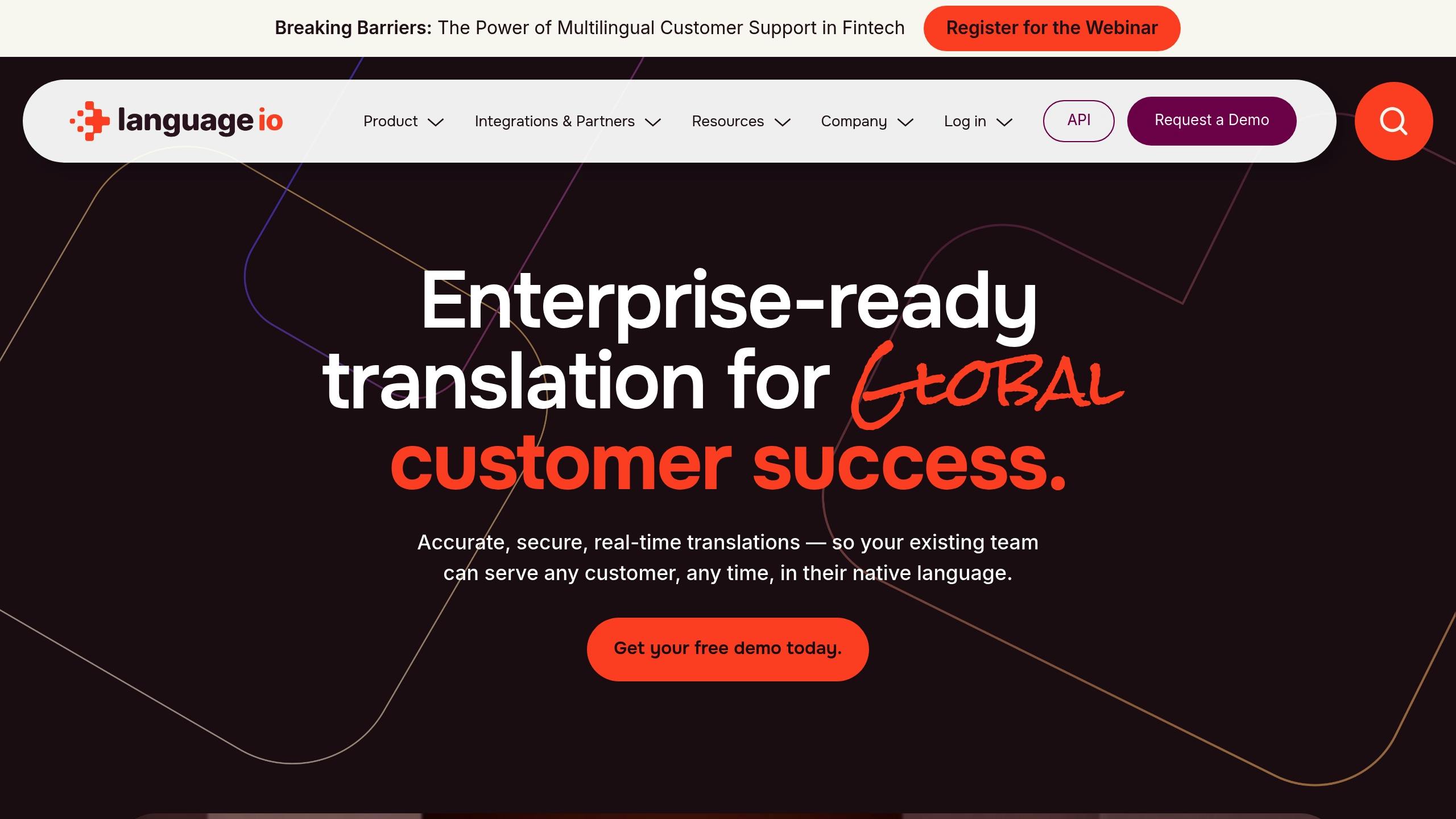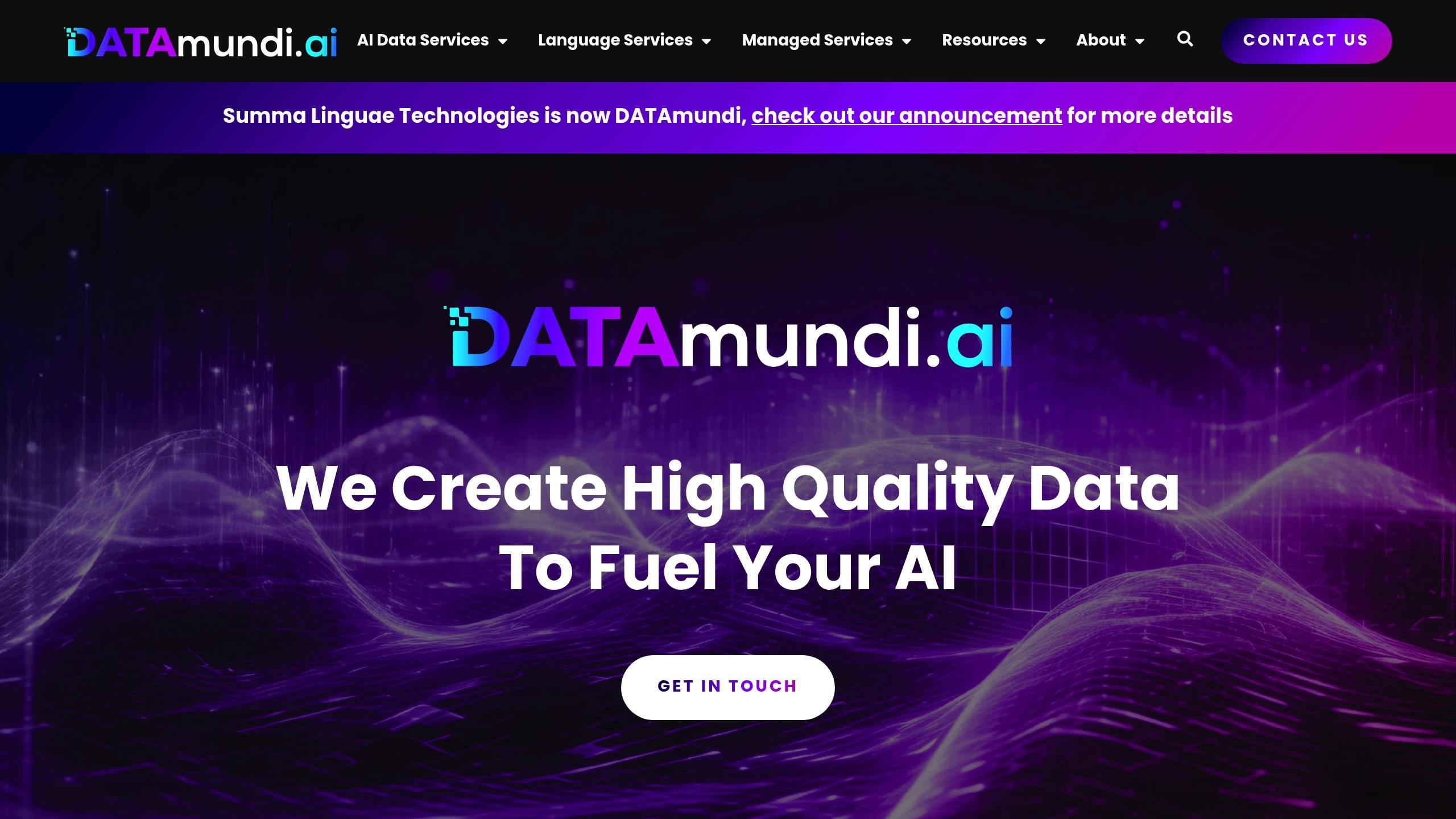.png)
Businesses lose millions every year because of language barriers—studies show that 40% of consumers simply won’t buy if a website doesn’t offer content in their language! The smart solution? Multilingual support AI tools. These platforms aren’t just for tech giants anymore—smaller customer support teams across the EU are using them every day for faster, more accurate, and cost-effective customer conversations.
Here’s a quick look at the 7 best multilingual support AI tools in 2025—these are tried and trusted by top service teams operating across borders:
- Neople: Supports 60+ languages, adapts through real customer interactions, and plugs into your CRM in minutes.
- Helpshift: Real-time chat and in-app messaging in over 150 languages.
- DeepL: Widely recognized for best-in-class European language accuracy.
- Language I/O: Human-AI hybrid translations for 150+ languages.
- Forethought: Predictive intent and voice support in 100+ languages.
- Summa Linguae (DATAmundi.ai): Combines AI with expert human linguists for complex translations.
Quick comparison
Easy multilingual AI agent in one click
Multilingual support in a single click is no longer a dream—tools like Neople now let EU teams offer voice and chat in English, Spanish, German, and dozens more. Get a live demo for a hands-on feel.
How to choose the right multilingual AI tool
Nearly half of global execs say their companies lose €8–11 million annually due to language issues (Moveworks study). Picking the ideal multilingual support AI tool is essential. Here’s what matters most:
- Translation accuracy: Poor translation can damage your brand as much as it confuses customers. Look for tools that “think” in context—like Neople, DeepL, or Helpshift’s Language AI.
- Language coverage: Plan for future growth! Insurance? 67% of customers demand native language when dealing with sensitive topics.
- Integration capabilities: Choose solutions offering native connections for your CRM, live chat, or messaging stack—especially if you’re tracking KPIs like CSAT, FCR, AHT, or ARR.
- Data protection and compliance: In the EU, GDPR isn’t a suggestion—it’s law. Also check for ISO 27001, SOC 2, or HIPAA where relevant.
- Cost-effectiveness: Smart AI can cut localization costs by 60% and reduce time to market by 80%.
- Analytics and reporting: Pick tools that measure your team’s success—look for dashboards featuring Escalation Rate, translation quality, and customer sentiment.
Pro tip: Assign weight to different criteria (accuracy, features, price) when comparing options, and use external resources like Zendesk’s localization research for benchmarks.
1. Neople
Neople is a digital coworker for customer support that offers AI-powered multilingual support across 60+ languages. What makes Neople unique is its ability to adapt and learn from every conversation, ensuring precise, brand-appropriate answers that improve over time.
Translation and NLP
At its core, Neople uses advanced large language models (LLMs) to catch all the nuance and context in customer questions—just as a local would. The more you use it, the sharper and more “on brand” the responses get. Teams see CSAT climb, AHT fall, and complicated workflows shrink.
Language coverage
60+ languages are covered, ideal for teams serving a mix of EU markets.
Integrations
Ready-to-go connections for Slack, Microsoft Teams, Zendesk, and more (see case study with The Social Hub). Neople can also operate without integrations if you are able to provide an independent log in.
Real-world impact
- Haarspullen cut response times by 55%.
- The Social Hub increased customer satisfaction by 15%.
- PSV (Eindhoven’s football team) automated thousands of queries using their Neople-powered digital assistant.

2. Helpshift
Helpshift aims to break language barriers through its Language AI, focusing on context-first communication and rich app/chat experiences.
Translation & NLP
Its AI custom-trains on your content, ensuring FAQ and chat translations stay accurate—and in your own voice (learn more).
Language coverage
Covers 150+ languages and newly released FAQ Translation supports 74 out of the box.
Integrations
Drops into most apps and workflow tools without dev heavy-lifting. ISO 27001, GDPR ready.
Results
Helpshift users see 30% cost reduction for non-English support, a 10% rise in CSAT, and improved agent productivity, especially when managing “tricky” language pairs (see real-world stories).

3. DeepL
DeepL is a favorite across Europe for high-accuracy neural translation—especially in complex language pairs.
Translation & NLP
Centus research finds DeepL produces 2x fewer errors than Google Translate and 3x fewer than GPT-4, with precise context handling and custom glossaries (Wikipedia).
Language coverage
Currently supports 33 languages, but quality over quantity—Deutsche Bahn runs Comms in 16 languages for 320,000 staff, while Paysend saw a 10% CSAT boost after integrating DeepL.
Integrations
DeepL plugs directly into CRMs, chat apps, and more via API. Leading SOC 2 and HIPAA compliance.

4. Language I/O
Language I/O combines neural translation with a real human QA layer to deliver enterprise-quality multilingual support for 150+ languages.
Translation & NLP
Their models are continuously improved by “human-in-the-loop” feedback and flagging of edge-case queries (learn more).
Language coverage
Handles over 150 languages, matching regions and industries as needed—especially strong for EU multi-market operations.
Integrations
Deep CRM and browser integrations (Salesforce partnership) for instant translation without extra agents.

Use cases
Commonly deployed by SaaS and e-commerce brands scaling into new European markets—saving up to 60% on multilingual costs (slashdot comparison).
5. Forethought
Forethought delivers multilingual AI support across chat, email, and voice, merging context-aware NLP and automation.
Translation & NLP
Features real-time “Agent Assist” and “Solve” for accurate, on-brand replies in over 30–100 languages depending on the channel (full list).
Language coverage
Wide support for rapid expansion and channel switching—supports language changes mid-conversation.
Integrations
Strong connections with Zendesk, Salesforce, Freshdesk, and other service platforms.

6. Summa Linguae (DATAmundi.ai)
Summa Linguae pairs AI automation with native linguists for enterprise-grade hybrid support—particularly useful for complex, regulated, or high-value interactions.
Translation & NLP
Newly acquired Datamundi brings top-rated data accuracy, while a rigorous human audit process ensures consistent brand experience.
Language coverage
100+ languages, including minority dialects and specialized industry vocabularies (supplier directory).
Integrations
Custom APIs for regulated sectors. Data handled per strict GDPR and CCPA standards.

Feature comparison table (detailed)
Conclusion
AI-powered multilingual support tools are changing the way European customer support teams connect with global customers. The key is finding a solution that aligns with your priorities—whether that’s coverage, cost, security, or consistent brand experience.
The evidence is clear: 74% of customers are more likely to buy again when they get support in their own language, and in insurance, 73% retention for multilingual service is becoming the new standard.
Best-in-class companies—from retailers like Haarspullen to international organizations like Siemens—are using multilingual AI to increase CSAT, shrink AHT, and drive ARR.
If you’re choosing for the first time, shortlist three tools from this article, review trials or demos, and test their integration with your day-to-day workflows.
FAQs
How can I choose the best AI tool for multilingual customer support?
- Review your language needs and future growth markets.
- Prioritize tools with real-time translation, robust analytics, and easy team adoption.
- Don’t skimp on compliance—GDPR matters.
What should I consider when integrating a multilingual AI tool?
- Seek simple integrations with your current CRM, chat, or support platforms.
- Look for tools trained on your historic data—and sure, keep adjusting settings as you evolve.
- Use analytics to monitor impact on CSAT and FCR.
How do AI translation tools protect user data?
- Encryption, data minimization, and regular audits are baseline.
- The best include admin controls and transparent privacy policies—see DeepL’s compliance and Summa Linguae’s protocols.
- Select a tool that is ISO certified.

.jpg)





.webp)